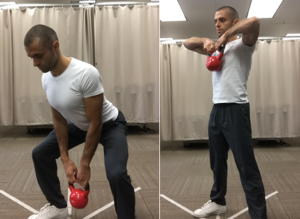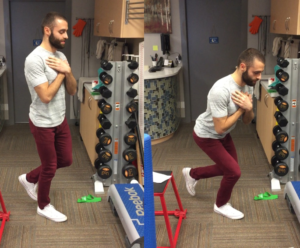Total Therapy Blog

Strength Training for Youth
Strength Training for Youth
Growing up through late elementary school and early high school, the idea of lifting weights to build muscle mass and get stronger always intrigued me. I was always considered one of the scrawnier kids in my grade so this motivated me to change my physique. However, people would constantly tell me that lifting weights was going to be detrimental to my growth especially since I began during puberty. This belief along with several others are part of the reason why many adolescents, whether they be athletes or not, are hesitant to hit the gym. Much of today’s general population have several misconceptions regarding strength and resistance training among minors and are unaware of the many benefits that it can offer.
Below are some common myths regarding the subject:
Strength training stunts growth:
While improper supervision of strength training can possibly lead to injury, it is a widely debunked myth that it will slow bone development in the early years of life. In fact, Strength training has been shown to promote bone density to help prevent injuries such as fractures (1).

Kettlebell squat to upright row
Promotes “bulky figure”:
In order for muscle hypertrophy (AKA bulking) to occur, there needs to be relatively higher levels of testosterone in the body then are available in prepubescent individuals. Early in life, the body does not yet have the capacity to significantly increase muscle growth, therefore strength gains are made more in the central nervous system. Adaptations made through strength training in adolescents is most likely through increasing the number and coordination of active motor neurons as well as the firing rate and pattern of these neurons (2).
Results in back pain later in life:
Participating in any form of physical activity to a certain extent involves an inherent risk of injury. However, if well supervised, strength training should not carry a higher injury risk than any other sport of activity (3). In fact, strength training has been shown to produce lower compressive forces on the back compared to sports involving running or jumping. It may even help prevent bone and growth plate injuries by strengthening bones, ligaments and tendons (4).

Single leg half-squat
Strength training = heavy lifting:
Strength training can take on a variety of different forms, any of which can be beneficial to an adolescent’s health and performance. While lifting heavy weights does have its time and place, young athletes can see similar benefits from other forms of strength training such as calisthenics (body weight strength exercises) and plyometric training (explosive movements). If one does not have access to a gym, calisthenic and plyometric training offer alternative ways to build strength in bone and soft tissue to decrease the risk of injury and increase athletic performance.
References:
- Ozmun, J. C., Mikesky, A. E., & Surburg, P. R. (1994). Neuromuscular adaptations following prepubescent strength training. Medicine & Science in Sports & Exercise,26(4). doi:10.1249/00005768-199404000-00017
- Ozmun, J. C., Mikesky, A. E., & Surburg, P. R. (1994). Neuromuscular adaptations following prepubescent strength training. Medicine & Science in Sports & Exercise,26(4). doi:10.1249/00005768-199404000-00017
- Faigenbaum, A. D., Kraemer, W. J., Cahill, B., Chandler, J., Dziados, J., Elfrink, L. D., . . . Roberts, S. (1996). YOUTH RESISTANCE TRAINING: POSITION STATEMENT PAPER AND LITERATURE REVIEW: Position Statement. Strength And Conditioning Journal,18(6), 62. doi:10.1519/1073-6840(1996)0182.3.co;2
- Behringer, M., Heede, A. V., Yue, Z., & Mester, J. (2010). Effects of Resistance Training in Children and Adolescents: A Meta-analysis. Pediatrics,126(5). doi:10.1542/peds.2010-0445








Follow Us!
& Stay Up To Date
BLOG